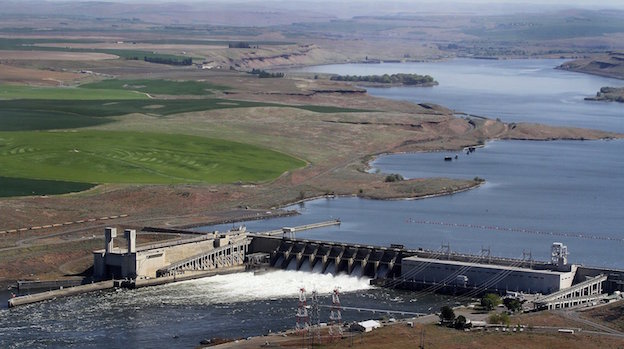forum
library
tutorial
contact

Lower Snake River Dams
Should Be Removed
by Bob Irvin
Tri-City Herald, November 23, 2020
|
the film forum library tutorial contact |

|
Lower Snake River Dams
by Bob Irvin
|
Based on the cost -- financial, ecological and cultural --
the four lower Snake River dams should be removed.
 Abundant, affordable hydropower helped build the Pacific Northwest we know today. But it has also come with tremendous costs. Damming the region's rivers has devastated salmon runs and the people who depend on salmon for their food, culture and livelihood. Many salmon and steelhead runs are now endangered or extinct. The entire web of life, from cedar trees to eagles to orcas, has felt the impacts.
Abundant, affordable hydropower helped build the Pacific Northwest we know today. But it has also come with tremendous costs. Damming the region's rivers has devastated salmon runs and the people who depend on salmon for their food, culture and livelihood. Many salmon and steelhead runs are now endangered or extinct. The entire web of life, from cedar trees to eagles to orcas, has felt the impacts.
While it is clear that dams have serious costs, we also recognize there is a continuing role for hydropower in the Pacific Northwest (there are roughly 150 hydro projects in the Columbia Basin alone). As we confront climate change, which poses an existential threat to life on our planet, it is critical that we balance our energy needs with our need for healthy rivers.
That is why, for the past two and a half years, American Rivers has participated in the "Uncommon Dialogue," convened by the Woods Institute at Stanford University.
The dialogue brought together representatives of the hydropower industry and the conservation community to find common ground on the role of hydropower in addressing climate change while also protecting and restoring free-flowing rivers. The participants recognized the need to reduce the environmental and safety impacts of U.S. dams, protect natural and cultural resources important to communities, such as Native American tribes, and increase the climate resilience of U.S. rivers.
The Uncommon Dialogue recently published a joint statement of collaboration, in which the parties agree to continue working together in key areas. These areas include accelerating the development of new hydropower technology, increasing basin-scale decision making, and advocating for increased funding for dam rehabilitation, retrofits and removals.
The joint statement also recognizes the need to better account for the greenhouse gas emissions from hydropower dams and reservoirs. New research shows that in some ecosystems, particularly in tropical regions, dams and reservoirs are the single largest human-caused source of methane emissions, which are a major driver of climate change.
This discussion about the costs and benefits of dams, and a commitment to pragmatic problem solving, is the kind of dialogue we need in the Pacific Northwest. There is growing momentum from tribes, conservationists and businesses for a Snake River watershed salmon recovery solution that includes removal of four federal dams on the lower Snake along with robust investments in clean energy, transportation and agricultural infrastructure.
If we apply the principles of our collaboration with the hydropower industry to the Columbia and Snake River system to assess dams whose costs outweigh the benefits to society or have adverse environmental impacts that cannot be remedied, one must conclude that all dams are not created equal. Based on the cost -- financial, ecological and cultural -- the four lower Snake River dams should be removed.
A 2018 study by Energy Strategies, LLC found that replacing the energy provided by the four lower Snake River dams with new clean sources will increase electric system reliability at a low cost while providing the best chance for fish restoration. "The region can remove the four lower Snake River Dams and replace the power they provide with a portfolio of conservation and renewable energy resources while maintaining grid and transmission reliability at levels equal to or better than the current system and with little or no increase in greenhouse gas emissions," the study states.
Governors of the four Northwest states recently pledged their commitment to finding solutions for salmon recovery. Now it's time for the Northwest's congressional delegation to build on the governors' collaborative work and work with the newly-elected Biden-Harris administration. The region needs the delegation's help in crafting a comprehensive legislative package that invests in clean energy and infrastructure to create jobs while taking the scientifically supported steps we need for salmon recovery. These investments and related policy changes will ensure the region has clean, reliable, and affordable energy long into the future.
It is past time for an honest conversation about energy, our rivers and our values. We need decisive action now, before we lose our Snake river salmon forever. We can, and we must embrace practical problem-solving that moves us all forward, together.
learn more on topics covered in the film
see the video
read the script
learn the songs
discussion forum
